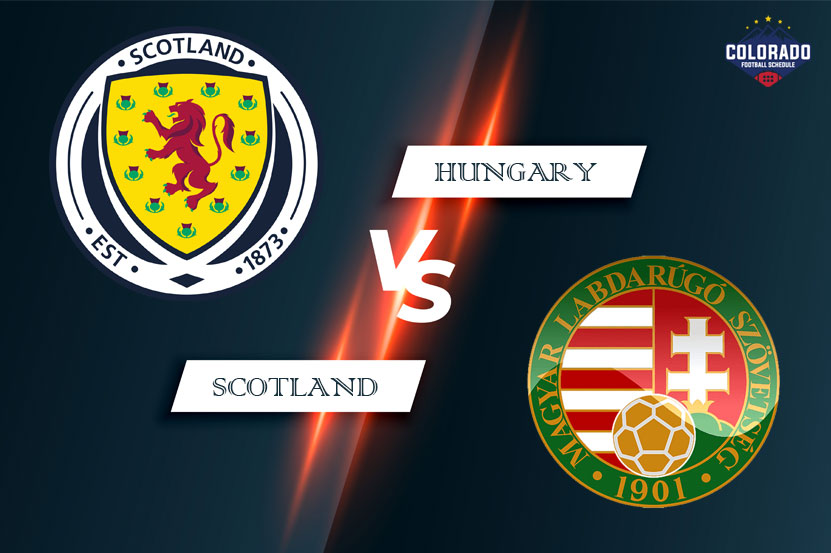Twelve months have passed since Kevin Csoboth’s stoppage-time strike sent Scotland packing from Euro 2024 and sent Hungary dancing into the Stuttgart night. The 1-0 result felt cruel to Scottish fans who had dominated the stands and possession, only to watch the Magyars pinch the points with virtually the last kick of the game. The memory still colours every conversation about the two sides, because it was the most high-stakes clash they’ve played for decades, and it underlined how little separates them on their best – and worst – days.
Where they stand right now
Fast-forward to July 10, 2025, and the global pecking order shows just a hair’s breadth between them. FIFA’s live list has Hungary in 38th place on 1,500 points, while Scotland sit six spots lower on 44th with roughly 1,482 points.
Regional results tell a similar story. In the 2024-25 Nations League, Scotland ended third in League A Group 1 behind Portugal and Croatia but ahead of Poland. Hungary, by contrast, fell to Turkey in the A/B play-off last March and will operate in League B for the next cycle after a bruising 6-1 aggregate loss. Though the ladders differ, the overall picture is of two mid-tier European sides capable of brilliant peaks and baffling troughs.
Scotland’s Nations League roller-coaster
Steve Clarke’s men earned promotion to League A in 2023, and the step-up proved steep. A creditable victory over Croatia and a battling draw with Portugal looked promising, but a string of tight losses left them in the relegation play-off. They edged Poland 2-1 in Warsaw, but Greece overturned a 1-0 first-leg deficit with a 3-0 master-class at Hampden Park to send the Tartan Army back to League B for 2026-27. It was a gut-punch, yet the campaign produced valuable experience against top-ten opposition that should pay off in World Cup qualifying.
Hungary’s Nations League story
Marco Rossi’s side looked to consolidate in League A after their breakout 2022-23 run, but they ran into a red-hot Turkey in March’s two-leg shoot-out (3-1 in Istanbul, 3-0 in Budapest). The heavy reverse pushed them down to League B, where early forecasts place them as group favourites alongside Northern Ireland, Bulgaria, and Belarus. The Magyars may quietly fancy using the lower tier to rebuild confidence and blood youngsters without the weekly pressure of facing the continental elite.
Scotland’s upcoming calendar
World Cup 2026 qualifying begins in earnest this September, and Scotland’s draw is tricky but not nightmarish. Key dates:
- 5 Sept 2025 – Denmark (away)
- 8 Sept 2025 – Belarus (away)
- 9 Oct 2025 – Greece (home)
- 12 Oct 2025 – Belarus (home)
- 15 Nov 2025 – Greece (away)
- 18 Nov 2025 – Denmark (home)
Clarke’s target is at least ten points from that six-game burst, enough to stay in the automatic-qualification conversation before Portugal (the group top seed) drops in via the Nations League path.
Hungary’s upcoming calendar
Hungary kick off their Group F campaign on almost the same weekends, giving neutral viewers a neat side-by-side comparison of progress:
- 6 Sept 2025 – Republic of Ireland (away)
- 9 Sept 2025 – Portugal (home)
- 11 Oct 2025 – Armenia (home)
- 14 Oct 2025 – Portugal (away)
- 13 Nov 2025 – Armenia (away)
- 16 Nov 2025 – Republic of Ireland (home)
Avoiding defeat in Lisbon would be a headline achievement, but the more realistic brief is to sweep Armenia and split the points with Ireland, leaving the Portuguese duels as free hits.
Key players to keep an eye on
| Scotland | Hungary |
|---|---|
| Scott McTominay – Converted into a late-running inside-forward, his knack for arriving untracked is Scotland’s primary goal source. | Dominik Szoboszlai – Creative fulcrum and dead-ball artist; every Hungarian counter funnels through him. |
| John McGinn – Leads the press, links midfield to lone striker and chips in with timely finishes. | Milos Kerkez – Relentless left-wing-back who turns defence into attack in seconds. |
| Ben Doak – The Liverpool flyer has broken into the XI and offers genuine pace out wide. | Adam Kerkez – Emerging centre-half (no relation to Milos) who won his first cap this spring and already looks assured. |
Tactics in plain language
Scotland press from the front, look to force errors, and then send runners beyond the lines. When they struggle, it’s usually because possession play turns slow, and the back three get pulled wide.
Hungary sit a little deeper, ride Rossi’s well-drilled 3-4-2-1 shape, and spring forward in waves once Szoboszlai or Roland Sallai receive the first forward pass. Their risk is space behind the wing-backs, especially if the midfield double pivot loses shape.
Both sides defend set pieces stoutly but can be caught by quick throw-ins – a quirk that surfaced in Euro 2024 and again in spring friendlies.
If they cross paths again, our forecast
There is no scheduled Scotland-Hungary rematch on the 2025-26 calendar, but two logical scenarios could throw them together:
- A November friendly window – both federations have pencilled “flex” slots for one warm-up match before qualification concludes.
- A March 2026 inter-league play-off – should one finish second in its World Cup group and the draw align.
Should such a game happen this season, form points to a razor-thin margin. Scotland hold a slight physical edge and a deeper bench, while Hungary carry more pure creativity. The deciding factor may well be efficiency in front of goal: Scotland average 1.2 goals per game under Clarke over the last 12 months, Hungary 1.4. A score draw feels the safest prediction, but if one side snatches an early opener, momentum could tilt heavily – late drama has punctuated three of their last four clashes, including Stuttgart.
Predicted outcome (neutral venue)
Probability Scotland win – 33 %
Probability Draw – 34 %
Probability Hungary win – 33 %
In short: flip a coin, buckle up, and expect a grandstand finish.
Final thoughts
Scotland and Hungary sit in an intriguing space: too strong to be called outsiders, too inconsistent for the top tier. Their next 18 months revolve around turning encouraging spells into full-campaign consistency. Whether it happens in a Nations League crossover, a friendly, or a high-stakes World Cup play-off, another clash is inevitable – and if recent history is any guide, it will come down to nerve, one razor-sharp break, and perhaps a single kick in stoppage-time.
For fans on either side, the message is simple: keep the calendar marked, keep the faith, and keep the heart medication handy.


Leave a Reply